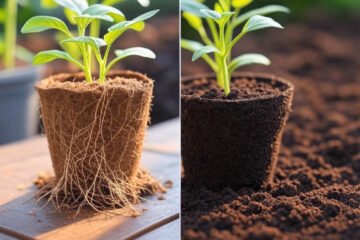
🌱 21 Amazing Plants That Thrive in Coco Peat
Introduction: Why Coco Peat is the Secret Weapon for Thriving Plants
In today’s fast-paced world, gardeners and home growers alike are turning to sustainable, low-maintenance, and effective solutions to nurture their green spaces. Coco peat—also known as coir pith or coco coir—is rapidly emerging as a game-changing growing medium for hobbyists and professionals. But the golden question is: Which plants grow best in coco peat?
This blog post is your definitive guide to uncovering 21 plants that flourish in coco peat, why it works, how to use it effectively, and the frequently asked questions that new and experienced growers often wonder about.
What is Coco Peat and Why Should You Care?
Coco peat is a fibrous material derived from the husk of coconuts. It boasts exceptional moisture retention, excellent aeration, and is eco-friendly—making it a compelling alternative to traditional soil. Gardeners love coco peat for its pH neutrality (5.5–6.5) and water retention capacity (up to 8x its weight).
Fast Fact: According to the International Coconut Community, over 650,000 metric tons of coco peat are produced globally each year—highlighting its explosive demand in agriculture and home gardening.
Top 21 Plants That Grow Exceptionally Well in Coco Peat
Let’s dive straight into the stars of the coco peat world. These are the best-performing, easy-to-maintain, and high-yielding plants to grow in coco peat-based setups:
🌿 Vegetables
-
Tomatoes – Love the aerated root system coco peat provides.
-
Cucumbers – Thrive with consistent moisture levels.
-
Spinach – Grows fast and lush in nutrient-rich coir mixes.
-
Lettuce – Perfect for hydroponics with coco peat.
-
Capsicum (Bell Peppers) – Strong roots and high productivity.
-
Carrots – Prefer the loose structure of coco peat for easy growth.
-
Beans – Quick to germinate and robust in coco blends.
🌸 Flowers
-
Roses – Benefit from the drainage and moisture balance.
-
Petunias – Their vibrant blooms love coco peat support.
-
Marigolds – Quick to blossom in airy mediums.
-
Chrysanthemums – Maintain vibrant color and robust growth.
🪴 Herbs
-
Basil – A Mediterranean herb that thrives in moisture-rich media.
-
Mint – Spreads rapidly and stays fragrant.
-
Coriander – Grows fuller and faster.
-
Parsley – Dense foliage and easy root development.
🍓 Fruits
-
Strawberries – Ideal for containers using coco peat mix.
-
Papaya (in early stages) – Excellent for seedling growth.
-
Chilies – Better fruiting and root strength.
🪴 Indoor Plants
-
Snake Plant – Adapts well to coco peat and requires minimal care.
-
Money Plant – Grows lush and spreads quickly.
-
Peace Lily – Retains its elegance in coir-based pots.
Frequently Asked Questions (FAQs)
Q1: Can coco peat be used alone for all plants?
👉 Not entirely. While coco peat provides excellent structure and water retention, it lacks essential nutrients. It must be mixed with compost, perlite, or vermicompost for optimal results.
Q2: Is coco peat suitable for hydroponics?
👉 Absolutely. Coco peat is a top choice for hydroponic systems due to its water-holding capacity and neutrality.
Q3: How often should you water plants in coco peat?
👉 Since coco peat retains moisture efficiently, watering frequency is significantly reduced—usually every 2–3 days, depending on temperature and plant type.
Q4: Is coco peat reusable?
👉 Yes! You can reuse coco peat up to 3 times, provided it is cleaned and sterilized properly after each growing cycle.
Q5: What plants should be avoided in coco peat?
👉 Plants that need dry, well-drained soil—like cacti and succulents—don’t thrive well in coco peat due to its moisture-holding nature.
Key Advantages of Using Coco Peat
✅ Sustainable & Renewable – Eco-conscious gardeners love it!
✅ Improves Soil Structure – Loosens heavy soil, perfect for roots.
✅ Reduces Watering Needs – Retains up to 800% of its weight in water.
✅ pH Balanced – Neutral levels help in nutrient absorption.
✅ Pest-Free Medium – Free from weeds and harmful microbes.
Real-Life Application: How Home Gardeners Are Winning With Coco Peat
Case Study: An urban gardener in Bangalore switched to a coco peat + compost mix and reported a 35% increase in tomato yield and reduced water usage by 50% within just one growing season.
Action Tip: Mix 60% coco peat + 30% compost + 10% perlite for an all-purpose, high-performance growing medium that works for most indoor and vegetable plants.
Conclusion: Grow Smarter, Not Harder
Coco peat is no longer a gardening trend—it’s a gardening revolution. Whether you’re growing leafy greens in a kitchen garden, vibrant flowers on your balcony, or herbs in an urban hydroponic system, coco peat provides the foundation for healthy, thriving plants.
If you’re still using plain soil and battling overwatering, root rot, or poor yields—it’s time to switch to coco peat and experience the difference.



